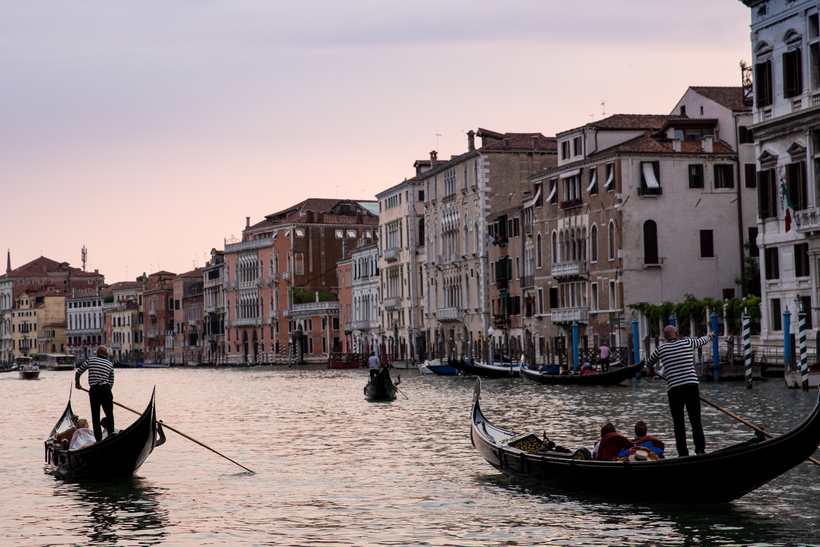Founded over a century ago, the Venice Biennale switches between art and architecture. This year marks the Biennale d’Arte’s 58th edition, which takes over Venice through November 24. As summer winds down and the crowds in Venice abate, AIR MAIL Arts Intel Researcher Elena Clavarino discusses the Biennale with Bianca Arrivabene, deputy chairman of Christie’s Italy—and a Venice native.
E.C.: First things first: for those unfamiliar with it, what is the Venice Biennale?
B.A.: The Biennale is an arts foundation based in Venice which encourages exploration within the following fields: music, dance, cinema, architecture, and visual art. For each art form, the Biennale showcases artists, both up-and-coming and well-known, who have a lot of vision.
How has the Biennale changed over the years?
Today the Biennale is respected worldwide, a far cry from when it was founded in 1895. One of the main reasons for this, I think, is the creative freedom the foundation affords the curators within each field. The Biennale really encourages them to think outside the box and the result is often cutting-edge, interesting, and emotional work.
The Biennale is a huge event and visiting it can be daunting. What’s the best way to navigate it?
Having a lot of time is ideal, so you can spend a day or two at the Giardini and the Arsenale—the main two events spaces—and a couple more days visiting the shows in various galleries around the city. If you can only stop by for a weekend, you should come with a carefully planned itinerary so as not to be distracted by everything else going on around you.
This year there’s been an uptick in female artists at the Biennale. Are there any new women artists you’re especially excited about?
Renate Bertlmann is a visual artist whose work is being presented in the Austrian Pavilion (the Biennale features pavilions based on artists’ nationalities). I consider Bertlmann’s art to be phenomenal. It’s centered around topics that are very relevant in today’s world: gender, the female body, eroticism.
What kind of crowd does the Biennale tend to draw? Who are some of the most exciting people who visit?
The whole world stops in during the opening months of the Biennale. We have all kinds of people passing through, from rappers to established artists to film producers to bankers. The most interesting conversations I’ve had are probably with some of the more passionate art collectors.
Venice has been battling tourism issues for years now. What are your thoughts on this?
Most museums and historic monuments worldwide impose a limit on the number of visitors by law. Venice should be treated like the museum space that it is—visitors should pay for a ticket in order to gain access to the city.
What does a day in your life look like?
My daily routine is the same as yours: breakfast, a stop at the gym, work, home, and friends. The only difference is my surroundings—everything that’s happening is happening in the most beautiful city in the world! I walk along canals on my way to the gym. I cross the Rialto on my way to work. I often take a gondola across the Canal Grande at San Tomà on my daily commute. And at night, if I want to join friends for dinner, I take our little boat out for a spin. Yes, I know, I’m very spoiled!
TOP 5 EXHIBITIONS AT THE BIENNALE, ACCORDING TO BIANCA:
- Ralph Rugoff’s Exhibition, “May You Live In Interesting Times” (located between the Giardini and the Arsenale)
- Brazil Pavilion (Giardini)
- India Pavilion (Arsenale)
- Ghana Pavilion (Arsenale)
- “Jannis Kounellis” (Fondazione Prada)
WHILE YOU’RE IN VENICE:
STAY:
Aman Venice is the place to stay—home to native Venetians and to all the guests who pass through it. The hotel is situated in the 16th-century Palazzo Papadopoli, along the Canal Grande.
If you are traveling on a lower budget, I would recommend Oltre il Giardino, a boutique hotel in the heart of the city. It was once the home of the American artist James McNeill Whistler.
EAT:
For dinner, I would recommend the Trattoria Antiche Carampane for seafood, and Harry’s Dolci for an early sunset dinner (this restaurant overlooks the Canale della Giudecca). Be sure to order the carpaccio! If you have more time, the Osteria Alle Testiere is also great. For lunch, you should go to the Ristorante Al Covo or the TrattoriaCorte Sconta. Both are situated between the Giardini and the Arsenale, offering perfect pit-stops between Biennale visits—and yummy ones!
